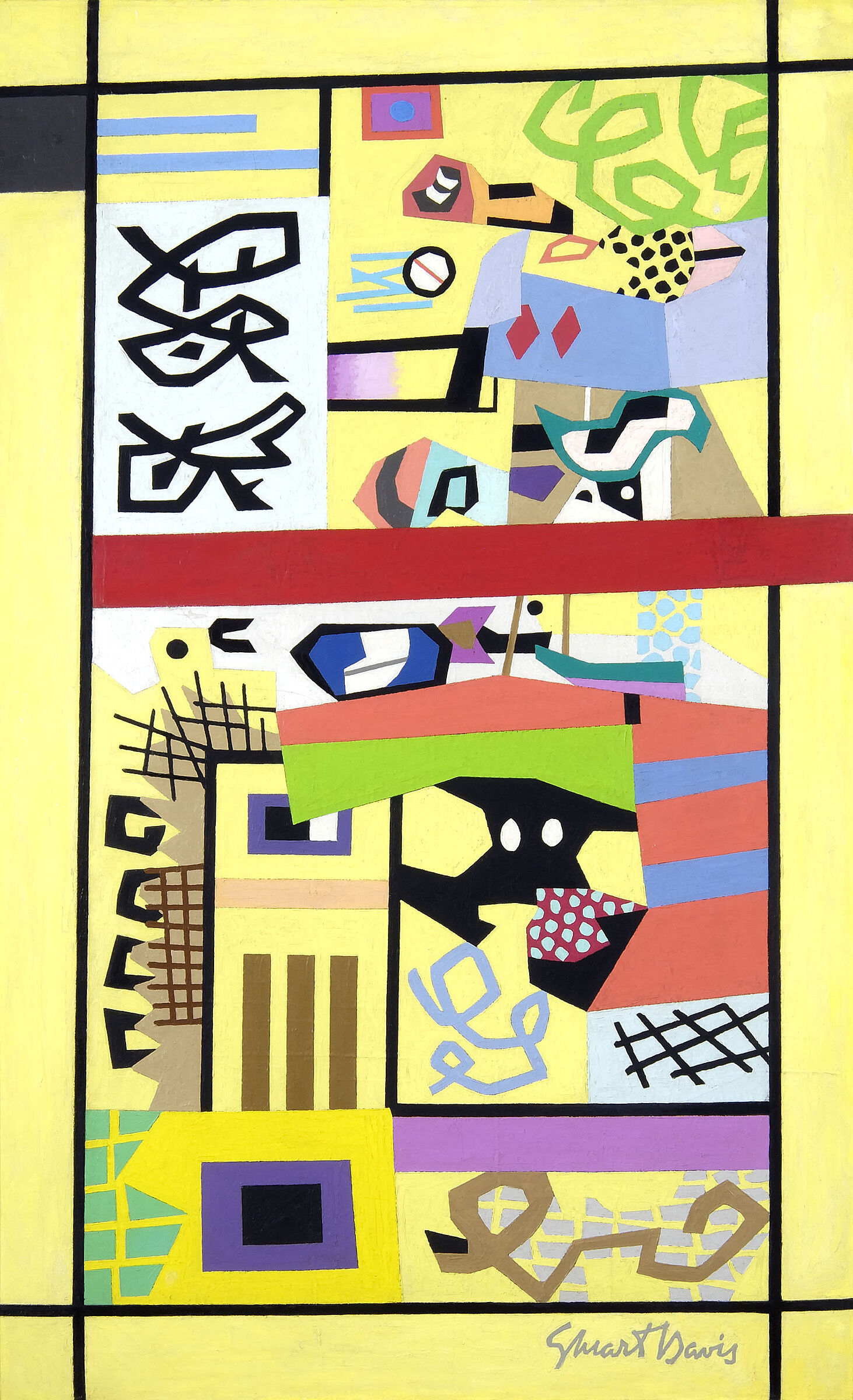Stuart Davis: In Full Swing | Art & Artists
June 10–Sept 25, 2016
Stuart Davis: In Full Swing | Art & Artists
The 1940s
5
Davis's political activism ended abruptly on April 4, 1940, when the American Artists' Congress, the organization he had presided over since 1937, voted to support the Soviet Union's invasion of Finland four months earlier. To Davis, the vote signaled that the congress had been overtaken by Stalinist sympathizers, and he resigned. Returning to making art full-time, he created canvases such as those on the left side of this gallery whose densely packed, brightly colored shapes of equal size and intensity distributed evenly across the surface kept the viewer's eye in constant motion. "Instead of a center focus...all parts of the field of observation are centers of focus, serial centers," Davis explained. The format was radical: not until Jackson Pollock created his first drip painting in 1947 would another American painter jettison Cubism's centralized format in favor of nonhierarchical, all-over paintings.
In 1939, Davis began the practice of creating groups or “families” of related paintings, often based on the compositions of his own much earlier works. His intention was not to create duplicates of previous paintings or to replicate their moods, but rather to use their configurations as springboards for new aesthetic ideas and interests. Previously, he had used his sketches as sources for paintings, often executed years later. Now, he began to do the same with works in oil, frequently creating multiple paintings based on the same configuration. He likened this recycling of motifs to jazz improvisations, explaining, “It’s the same thing as when a musician takes a sequence of notes and makes many variations on them.”
Below is a selection of works from The 1940s.
For Internal Use Only, 1944–45
The bifurcated structure of this painting was based on a side-by-side frame from a Popeye comic strip that Davis turned vertically. Other aspects—the floating black square in its upper left corner, its mostly yellow palette, and the strong black lines within its perimeter—refer to the work of the De Stijl artist Piet Mondrian, who died the year Davis began the painting. Davis’s union of both popular-culture and fine-art references mirrored his efforts to harness the grammar of abstraction to the ebullience of everyday life.

